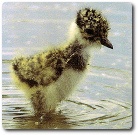The White Devil Contents
Act 2 scene 1
Synopsis
Francisco de Medici, the Duke of Florence, talks to his sister Isabella (wife of Brachiano), who has recently arrived with her son, Giovanni.
Francisco questions her as to whether she has seen her husband yet, and asks her to leave so that he can speak with him first. Isabella is anxious that this will make things worse between her and her husband.
Francisco and Cardinal Monticelso warn Brachiano about the consequences of his shameful behaviour with Vittoria. Brachiano defies them and refuses to part with Vittoria, though he is reminded that he may get syphilis (implying that Vittoria is a prostitute) and is neglecting his duties.
Young Giovanni, who is keen to lead his own army and defeat the French, returns. Monticelso reminds Brachiano that he should set a good example to his son, whose amusing sayings bring about a temporary reconciliation between his father (Brachiano) and uncle (Francisco). It is mentioned that Lodovico has become a pirate.
Isabella enters and talks with Brachiano alone. However, he is immediately hostile, refusing to kiss her and accusing her of complaining to her powerful brother. He declares he is divorcing Isabella, who responds by taking the blame on herself and praying for him to return to her.
When Francisco and Monticelso return with Flamineo and Marcello, Isabella rails against Vittoria and at the end of her speech claims she is divorcing Brachiano. Francisco now blames Isabella for ending the marriage and she leaves for Padua.
Vittoria's husband, Camillo, enters and talks to Monticelso and Francisco at one side of the stage, who warn him that Vittoria is making a cuckold of him (being unfaithful). On the other side Brachiano and Flamineo quietly plot to get rid of Camillo. Doctor Julius enters. He has a reputation for treachery and poisoning and Brachiano sends him to Padua to use his skills on Isabella. Meanwhile Flamineo says he will take care of Camillo so that his death will look accidental.
Monticelso sends Camillo off to fight the pirates, hoping Brachiano will now continue his affair with Vittoria, and thus provide enough evidence to be condemned. In fact Francisco and Monticelso admit that the ‘pirates' are non existent - Lodovico is actually in Padua to ask Isabella for a pension. They feel that this ruse is justified so that they can trap Vittoria and Brachiano. The means justify the ends.
Commentary
In this scene we are introduced to the representatives of the ‘great men' who are often referred to. They are Francisco de Medici, Duke of Florence and Cardinal Monticelso (see Religious / philosophical context > Attitudes to Catholicism > Catholic stereotypes in The White Devil).
There are numerous examples of animal imagery in this scene, particularly in reference to Vittoria. The sense of unlawful death hangs over this scene, with the references to poison and the plots to kill Isabella and Camillo.
Jacques the Moor: This character has a non-speaking part and may be left over from a previous version. He is the black servant of the young Giovanni.
 If such a dove-house … that haunt to't: Use of animal imagery to refer to Vittoria. The reference to polecat implies she is a prostitute.
If such a dove-house … that haunt to't: Use of animal imagery to refer to Vittoria. The reference to polecat implies she is a prostitute.
As men to try … infected straying: A spider would be encircled by a ring of powder made from a unicorn's horn to prevent it leaving. Spiders considered to be poisonous are put in opposition to unicorns, mythical creatures denoting goodness and innocence. This shows Isabella's belief that goodness can overcome wickedness.
Void the chamber: Webster's imaginative use of staging. The crowded stage now becomes an intimate scene with just three people.
adder's tail: Another example of poisonous animal imagery.
Some eagles … their prey can seize: Animal imagery showing eagles turning to eat off dunghills rather than flying high to seize their prey. This represents Brachiano turning to Vittoria rather than to his wife.
hemlock: A poisonous plant.
The ghostly father with all's absolution: Brachiano's sins are so great that even the Pope (his spiritual father) cannot absolve him enough for heaven.
Plasters: Associated with the results of sexually transmitted disease
Discover flocks … moulting time/ tub: ‘Wild ducks' was a term for prostitutes and the reference to moulting time meant loss of hair which was a result of syphilis, a sexually transmitted disease. Sweating tubs were used in the treatment of syphilis.
 Forward lapwing … on's head: It was believed that a newly-born lapwing chick ran about with part of the eggshell still on its head. The reference is to Giovanni.
Forward lapwing … on's head: It was believed that a newly-born lapwing chick ran about with part of the eggshell still on its head. The reference is to Giovanni.
circle of pure … horns upon thee: This refers back to Isabella's image of the spider encircled by the powder from a unicorn's horn. Francisco is telling her that her belief in the power of goodness was unfounded.
Bring down her stomach: Hysterical passion (commonly known as the ‘mother') was believed to swell the organs, particularly the womb.
stibium: Metallic antimony used as poison.
cantharides: Dried Spanish fly used as an aphrodisiac, but could cause death if used in excess.
toad: An animal that spits poison. An appropriate image for Doctor Julius, the master of poisoning.
Emblem: A symbolic image / picture which encapsulates a moral message.
‘tis given … cuckold: A man whose wife has been unfaithful to him.
 Cornucopia: According to classical myth, the horn of plenty. Ironically here, it is a cuckold's horn which is increasing.
Cornucopia: According to classical myth, the horn of plenty. Ironically here, it is a cuckold's horn which is increasing.
It may be objected … my kinsman: Typically Machiavellian actions; the use of plotting and deceit to gain one's ends (see Religious / philosophical context > Renaissance > Machiavelli).
Mistletoe: When the elm tree hosting the mistletoe dies, the mistletoe will die too. It is an image to indicate the way in which Brachiano and Vittoria will bring about their own destruction.
Investigating Act 2 scene 1
- Francisco and Monticelso are introduced in this scene
- What are their full titles and what can they be seen to represent?
- Look at Monticelso's speech beginning ‘It is a wonder to your noble friends'.
- How does it echo the sentiments expressed by Cornelia in the previous scene?
- Where else in Act 2 sc. 1 does Francisco draw attention to Brachiano's social position and responsibilities?
- Identify images related to poisoning in the scene.
- What images are used to describe Vittoria?
- Look again at the scene from, ‘No my dear lord, you shall have present witness' up to Isabella's exit
- Why does Isabella publicly reject Brachiano?
- How might an audience interpret her brother's response to her behaviour?
- What dramatic purpose do you think Giovanni has in this scene?
- Why might the audience view Francisco and Monticelso differently by the end of the scene?
- Draw a plan to show which characters remain and leave at different sections of the scene
- Note down any points where a particular effect is achieved by having certain groups of characters on the stage at the same time.